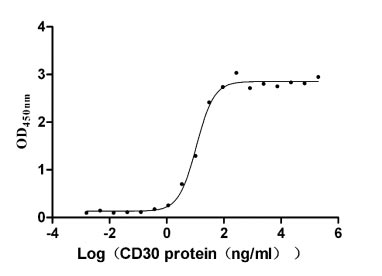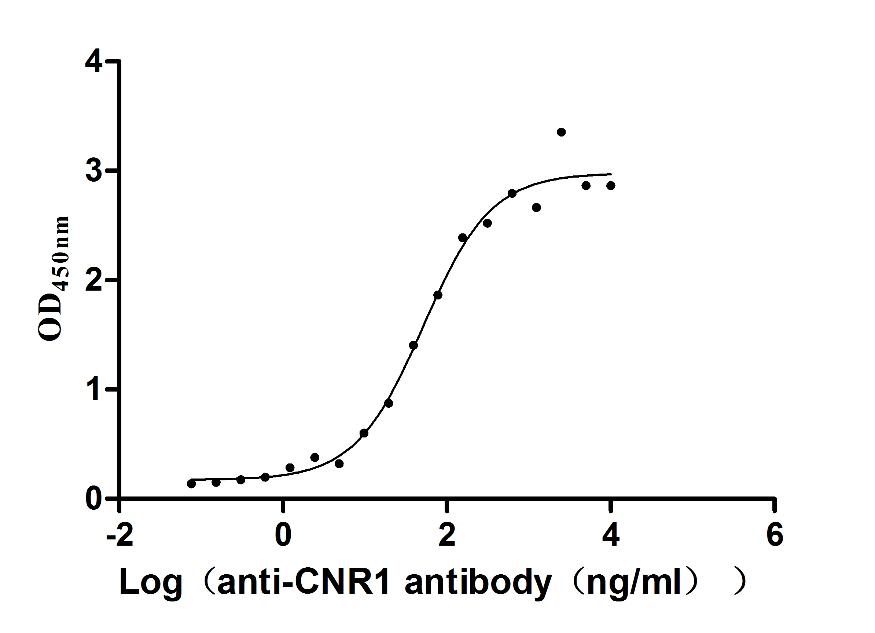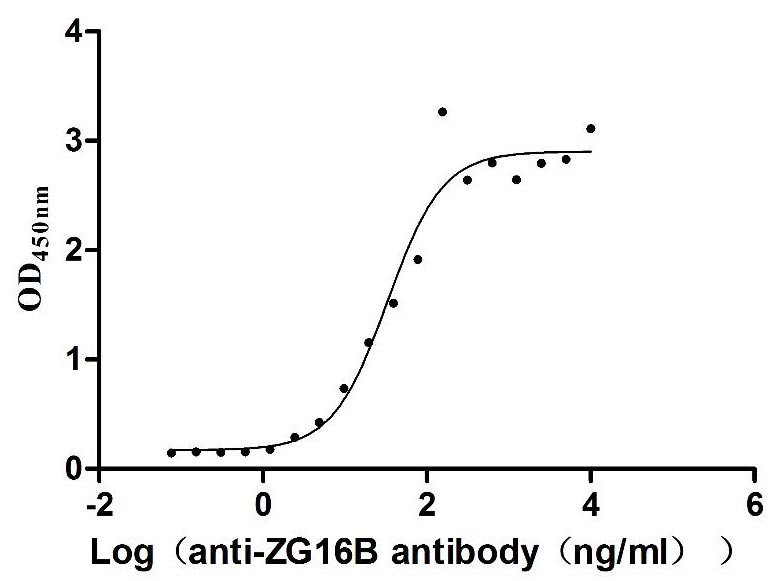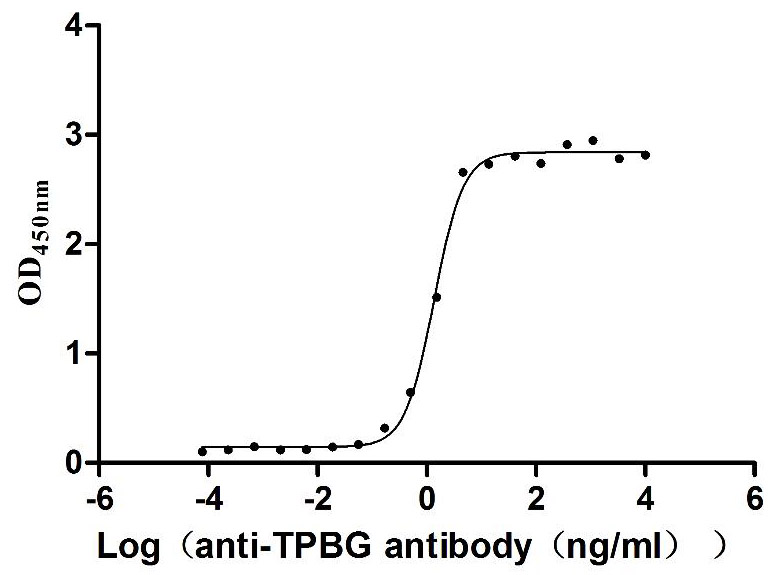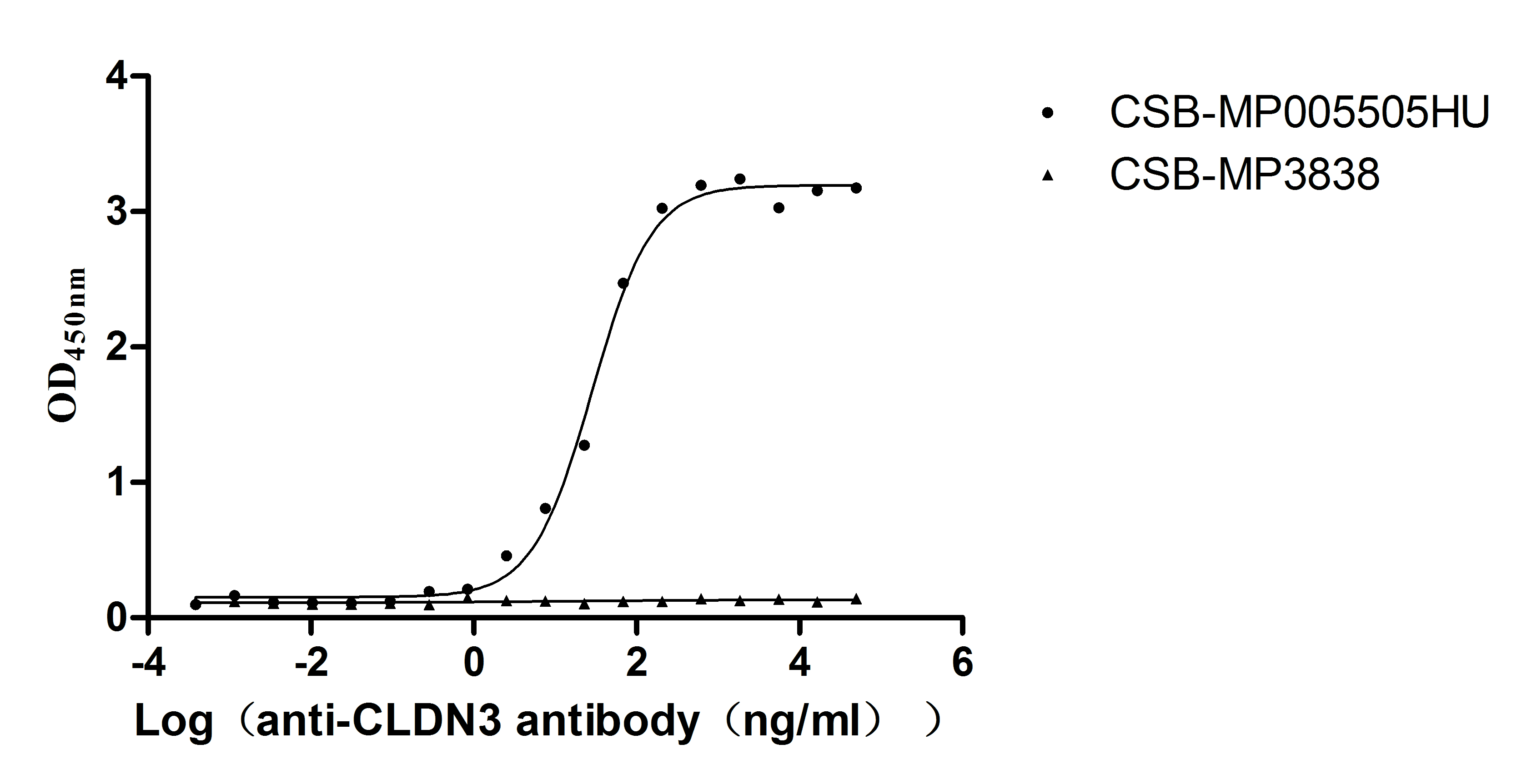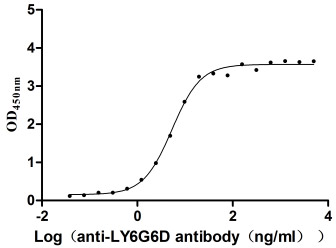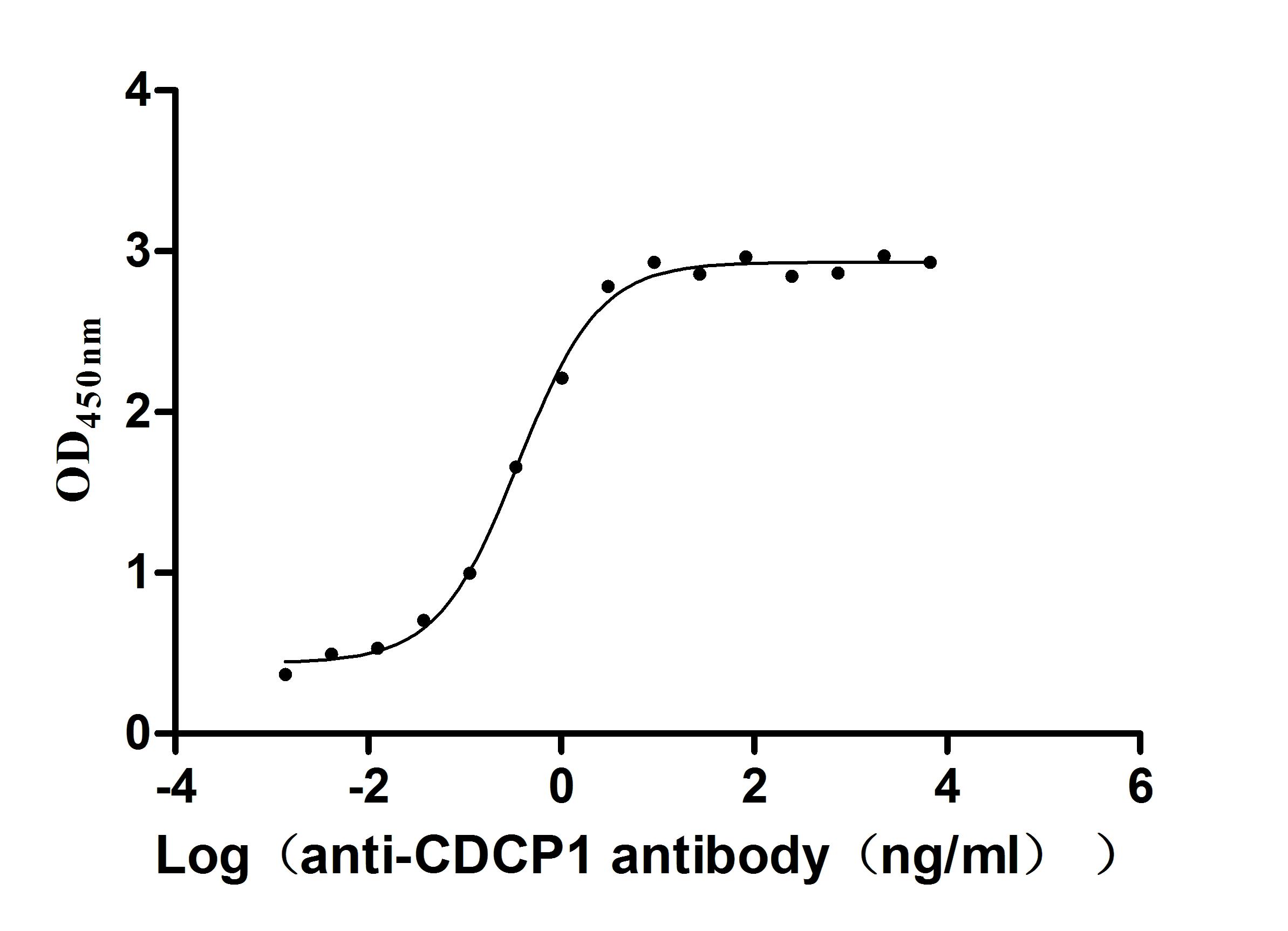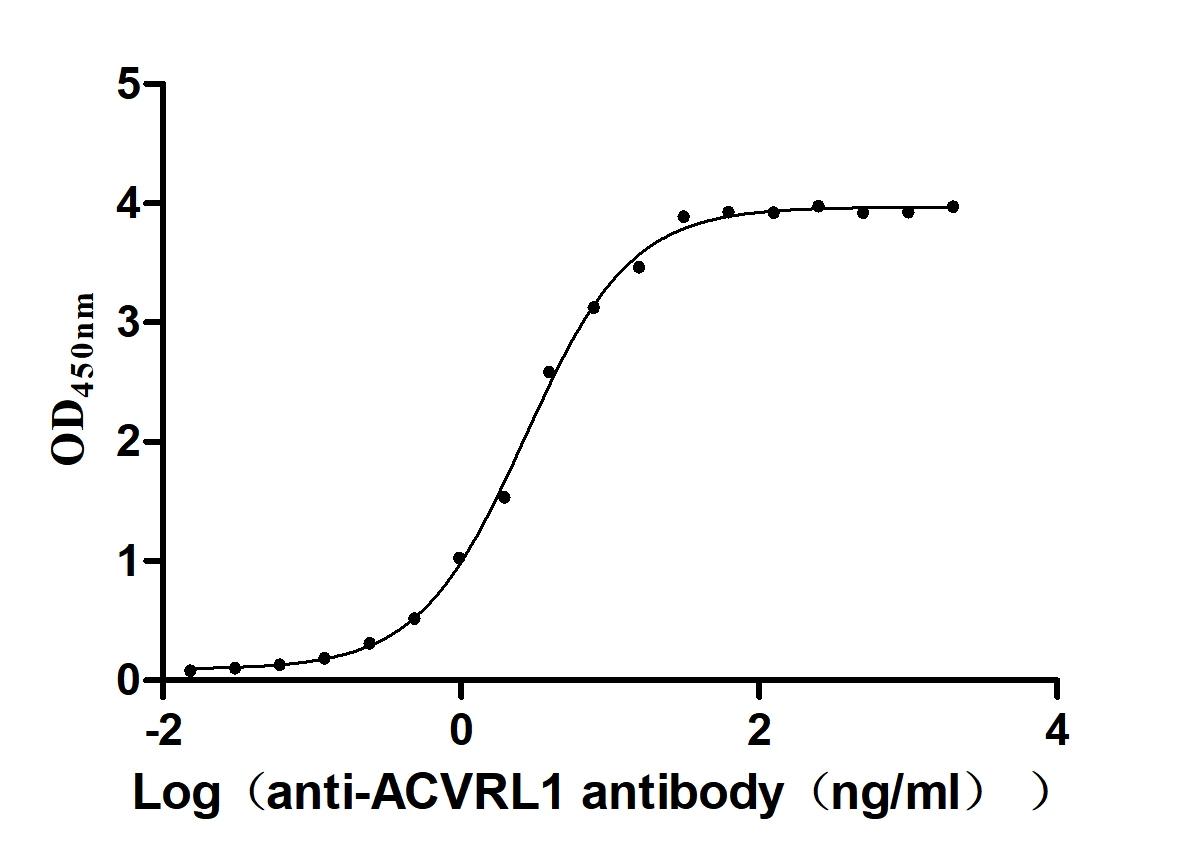Recombinant Human Acetylcholinesterase collagenic tail peptide (COLQ)
-
中文名稱:Recombinant Human Acetylcholinesterase collagenic tail peptide(COLQ)
-
貨號(hào):CSB-YP896864HU
-
規(guī)格:
-
來源:Yeast
-
其他:
-
中文名稱:Recombinant Human Acetylcholinesterase collagenic tail peptide(COLQ)
-
貨號(hào):CSB-EP896864HU
-
規(guī)格:
-
來源:E.coli
-
其他:
-
中文名稱:Recombinant Human Acetylcholinesterase collagenic tail peptide(COLQ)
-
貨號(hào):CSB-EP896864HU-B
-
規(guī)格:
-
來源:E.coli
-
共軛:Avi-tag Biotinylated
E. coli biotin ligase (BirA) is highly specific in covalently attaching biotin to the 15 amino acid AviTag peptide. This recombinant protein was biotinylated in vivo by AviTag-BirA technology, which method is BriA catalyzes amide linkage between the biotin and the specific lysine of the AviTag.
-
其他:
-
中文名稱:Recombinant Human Acetylcholinesterase collagenic tail peptide(COLQ)
-
貨號(hào):CSB-BP896864HU
-
規(guī)格:
-
來源:Baculovirus
-
其他:
-
中文名稱:Recombinant Human Acetylcholinesterase collagenic tail peptide(COLQ)
-
貨號(hào):CSB-MP896864HU
-
規(guī)格:
-
來源:Mammalian cell
-
其他:
產(chǎn)品詳情
-
純度:>85% (SDS-PAGE)
-
基因名:COLQ
-
Uniprot No.:
-
別名:Acetylcholinesterase collagen-like tail subunit isoform I; Acetylcholinesterase collagenic tail peptide; Acetylcholinesterase collagenic tail peptide precursor; Acetylcholinesterase-associated collagen; AChE Q subunit; asymmetric acetylcholinesterase; Collagen-like tail subunit (single strand of homotrimer) of asymmetric acetylcholinesterase ; Colq; COLQ_HUMAN; EAD; OTTHUMP00000209566; OTTHUMP00000209567; single strand of homotrimeric collagen-like tail subunit of asymmetric acetylcholinesterase
-
種屬:Homo sapiens (Human)
-
蛋白長度:Full Length of Mature Protein
-
表達(dá)區(qū)域:23-455
-
氨基酸序列QPTFINSV LPISAALPSL DQKKRGGHKA CCLLTPPPPP LFPPPFFRGG RSPLLSPDMK NLMLELETSQ SPCMQGSLGS PGPPGPQGPP GLPGKTGPKG EKGELGRPGR KGRPGPPGVP GMPGPIGWPG PEGPRGEKGD LGMMGLPGSR GPMGSKGYPG SRGEKGSRGE KGDLGPKGEK GFPGFPGMLG QKGEMGPKGE PGIAGHRGPT GRPGKRGKQG QKGDSGVMGP PGKPGPSGQP GRPGPPGPPP AGQLIMGPKG ERGFPGPPGR CLCGPTMNVN NPSYGESVYG PSSPRVPVIF VVNNQEELER LNTQNAIAFR RDQRSLYFKD SLGWLPIQLT PFYPVDYTAD QHGTCGDGLL QPGEECDDGN SDVGDDCIRC HRAYCGDGHR HEGVEDCDGS DFGYLTCETY LPGSYGDLQC TQYCYIDSTP CRYFT
-
蛋白標(biāo)簽:Tag?type?will?be?determined?during?the?manufacturing?process.
The tag type will be determined during production process. If you have specified tag type, please tell us and we will develop the specified tag preferentially. -
產(chǎn)品提供形式:Lyophilized powder
Note: We will preferentially ship the format that we have in stock, however, if you have any special requirement for the format, please remark your requirement when placing the order, we will prepare according to your demand. -
復(fù)溶:We recommend that this vial be briefly centrifuged prior to opening to bring the contents to the bottom. Please reconstitute protein in deionized sterile water to a concentration of 0.1-1.0 mg/mL.We recommend to add 5-50% of glycerol (final concentration) and aliquot for long-term storage at -20℃/-80℃. Our default final concentration of glycerol is 50%. Customers could use it as reference.
-
儲(chǔ)存條件:Store at -20°C/-80°C upon receipt, aliquoting is necessary for mutiple use. Avoid repeated freeze-thaw cycles.
-
保質(zhì)期:The shelf life is related to many factors, storage state, buffer ingredients, storage temperature and the stability of the protein itself.
Generally, the shelf life of liquid form is 6 months at -20°C/-80°C. The shelf life of lyophilized form is 12 months at -20°C/-80°C. -
貨期:Delivery time may differ from different purchasing way or location, please kindly consult your local distributors for specific delivery time.Note: All of our proteins are default shipped with normal blue ice packs, if you request to ship with dry ice, please communicate with us in advance and extra fees will be charged.
-
注意事項(xiàng):Repeated freezing and thawing is not recommended. Store working aliquots at 4°C for up to one week.
-
Datasheet :Please contact us to get it.
靶點(diǎn)詳情
-
功能:Anchors the catalytic subunits of asymmetric AChE to the synaptic basal lamina.
-
基因功能參考文獻(xiàn):
- To study cholinesterase distribution in patients with COLQ gene mutation, immunohistochemical staining and indirect immunofluorescence method was used to detect cholinesterase lack of disease in patients with resectable pancreatic or lung tissue samples, confirmed cholinesterase distribution in nerve fibers surrounding the vessels. Expression of cholinesterase in mutant patients was significantly higher than wildtype. PMID: 29630557
- COLQ rs7609897-T association with diverticular disease in Iceland and Denmark population. PMID: 28585551
- This data highlight COLQ (R410W) as a variant to initially test for in patients who have isolated limb-girdle myasthenia and are not responsive to acetylcholine receptor inhibitors, especially those from southern India. PMID: 30124556
- Mutations in RAPSN and COLQ are the most common causes of congenital myasthenic syndrome in Israel. PMID: 28024842
- Global splicing analysis with RNA-seq revealed that exons carrying the hnRNP H-binding GGGGG motif are predisposed to be skipped compared to those carrying the SRSF1-binding GGAGG motif in both human and mouse brains. PMID: 26282582
- study identified the molecular cause underlying congenital myasthenic syndrome in two patients in a Syrian family, a novel missense mutation, homozygous single nucleotide substitution (c.1010T>C) in the COLQ gene PMID: 24938146
- findings suggest that the impaired attachment of COOH-terminal mutants causing EP AChE deficiency is in part independent of MuSK, and that the COOH-terminus of ColQ may interact with other proteins at the BL PMID: 24281389
- We proved that the missense mutations in ColQ-CTD cause endplate AChE deficiency by compromising ColQ-MuSK interaction at the NMJ. PMID: 23553736
- This study presented that four cases illustrate the clinical spectrum of the recurrent homozygous W148X mutation in the COLQ gene. PMID: 22490774
- Long-term follow-up of patients with COLQ mutations showed no genotype-phenotype correlation, 80% of patients were ambulant and 87% of patients had no respiratory trouble in spite of severe relapses. PMID: 22088788
- two siblings have identical novel heterozygous mutations but different phenotypic expressions. PMID: 20370815
- Three novel colq protein mutations in eight kinships. PMID: 11865139
- Both patients presented a novel splicing mutation (IVS1-1G-->A) affecting the exon encoding the proline-rich attachment domain (PRAD), which interacts with acetylcholinesterase. PMID: 12609505
- muscle fiber type-specific expression pattern of ColQ transcripts was regulated by a slow upsteam regulatory element (SURE) and a fast intronic regulatory element (FIRE) PMID: 16256971
- we found familial occurrence of congenital ptosis in heterozygous carriers of 950delC. PMID: 17300939
- Twenty different mutations of the COLQ gene have been identified in our patients: The mutations are missense (6), splice-site (3), in-frame deletion (1), non-sense (4) and frameshift (6). The majority of the mutations are protein truncating. PMID: 18180250
顯示更多
收起更多
-
相關(guān)疾病:Myasthenic syndrome, congenital, 5 (CMS5)
-
亞細(xì)胞定位:Cell junction, synapse.
-
蛋白家族:COLQ family
-
組織特異性:Found at the end plate of skeletal muscle.
-
數(shù)據(jù)庫鏈接:
Most popular with customers
-
Recombinant Human Tumor necrosis factor ligand superfamily member 8 (TNFSF8), partial (Active)
Express system: Mammalian cell
Species: Homo sapiens (Human)
-
Recombinant Human Cannabinoid receptor 1 (CNR1)-VLPs (Active)
Express system: Mammalian cell
Species: Homo sapiens (Human)
-
Recombinant Human Pancreatic adenocarcinoma up-regulated factor (ZG16B) (Active)
Express system: Mammalian cell
Species: Homo sapiens (Human)
-
Recombinant Human Trophoblast glycoprotein (TPBG), partial (Active)
Express system: Mammalian cell
Species: Homo sapiens (Human)
-
Recombinant Human Claudin-3 (CLDN3)-VLPs (Active)
Express system: Mammalian cell
Species: Homo sapiens (Human)
-
Recombinant Macaca fascicularis lymphocyte antigen 6 family member G6D (LY6G6D) (Active)
Express system: Yeast
Species: Macaca fascicularis (Crab-eating macaque) (Cynomolgus monkey)
-
Recombinant Human CUB domain-containing protein 1 (CDCP1), partial (Active)
Express system: Mammalian cell
Species: Homo sapiens (Human)
-
Recombinant Human Serine/threonine-protein kinase receptor R3 (ACVRL1), partial (Active)
Express system: Baculovirus
Species: Homo sapiens (Human)


